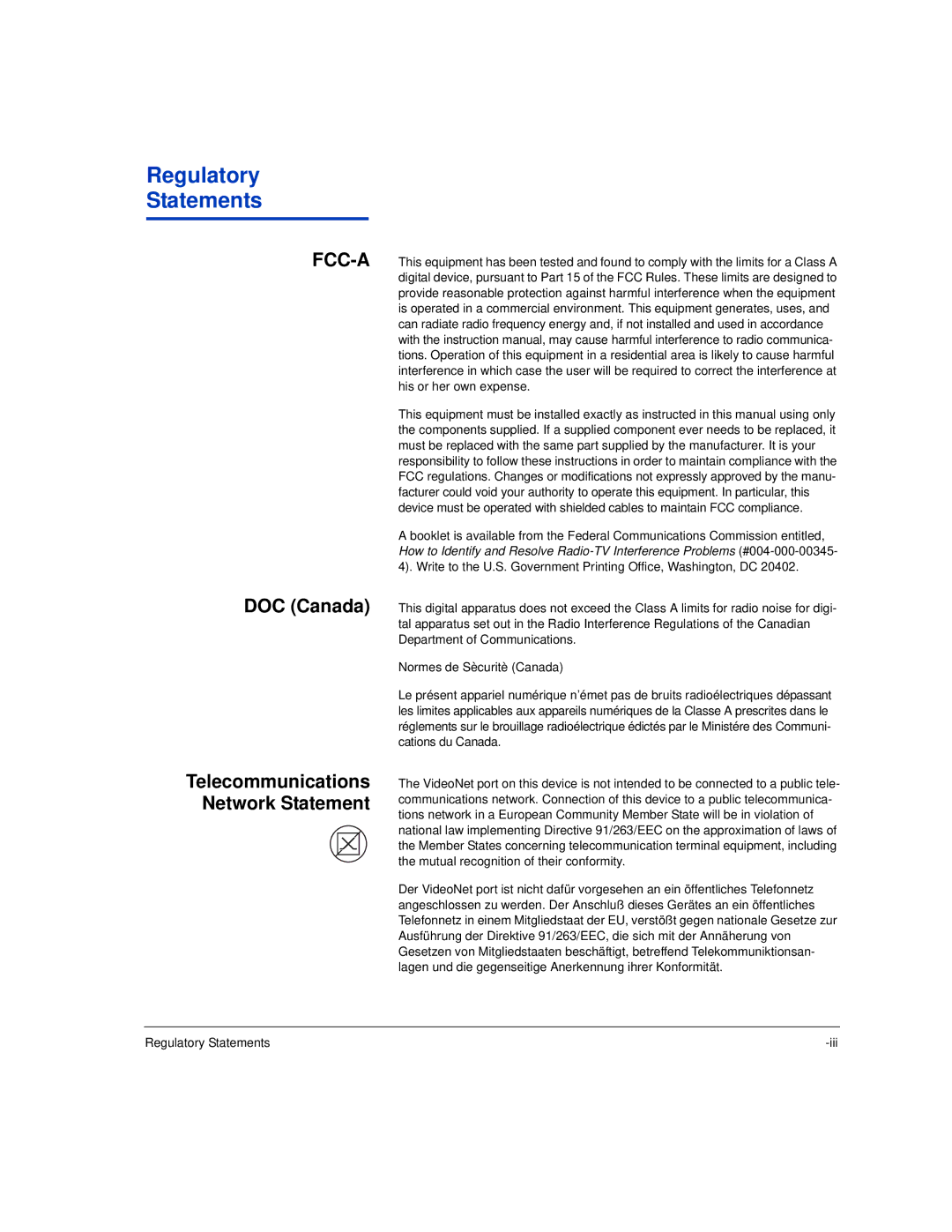
Regulatory
Statements
FCC-A
DOC (Canada)
Telecommunications Network Statement
This equipment has been tested and found to comply with the limits for a Class A digital device, pursuant to Part 15 of the FCC Rules. These limits are designed to provide reasonable protection against harmful interference when the equipment is operated in a commercial environment. This equipment generates, uses, and can radiate radio frequency energy and, if not installed and used in accordance with the instruction manual, may cause harmful interference to radio communica- tions. Operation of this equipment in a residential area is likely to cause harmful interference in which case the user will be required to correct the interference at his or her own expense.
This equipment must be installed exactly as instructed in this manual using only the components supplied. If a supplied component ever needs to be replaced, it must be replaced with the same part supplied by the manufacturer. It is your responsibility to follow these instructions in order to maintain compliance with the FCC regulations. Changes or modifications not expressly approved by the manu- facturer could void your authority to operate this equipment. In particular, this device must be operated with shielded cables to maintain FCC compliance.
A booklet is available from the Federal Communications Commission entitled, How to Identify and Resolve
This digital apparatus does not exceed the Class A limits for radio noise for digi- tal apparatus set out in the Radio Interference Regulations of the Canadian Department of Communications.
Normes de Sècuritè (Canada)
Le présent appariel numérique n’émet pas de bruits radioélectriques dépassant les limites applicables aux appareils numériques de la Classe A prescrites dans le réglements sur le brouillage radioélectrique édictés par le Ministére des Communi- cations du Canada.
The VideoNet port on this device is not intended to be connected to a public tele- communications network. Connection of this device to a public telecommunica- tions network in a European Community Member State will be in violation of national law implementing Directive 91/263/EEC on the approximation of laws of the Member States concerning telecommunication terminal equipment, including the mutual recognition of their conformity.
Der VideoNet port ist nicht dafür vorgesehen an ein öffentliches Telefonnetz angeschlossen zu werden. Der Anschluß dieses Gerätes an ein öffentliches Telefonnetz in einem Mitgliedstaat der EU, verstößt gegen nationale Gesetze zur Ausführung der Direktive 91/263/EEC, die sich mit der Annäherung von Gesetzen von Mitgliedstaaten beschäftigt, betreffend Telekommuniktionsan- lagen und die gegenseitige Anerkennung ihrer Konformität.
Regulatory Statements |
